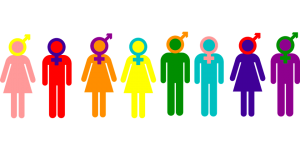If you’re equipped with excellent written or interpersonal communication skills, conducting research is easy. You identify hypotheses, develop questions or discussion guides to address them, and you’re done! Except you’re not done.
People come prewired with literally hundreds of cognitive biases that affect everything they think, fel, and do, no matter how hard they try to be logical, factual, and objective.
Let’s consider just 15 of those biases in terms of how each one can affect our research data.
-
- Availability heuristic: People overestimate events that are more memorable, oftn because those events were more recent, unusual, or emotional. If you ask people where they usually shop, they might be more likely to mention a store they visited yesterday even though they rarely ever go there. Or, they might be more likely to mention a store they rarely visit but where something strange and unusual happened.
- Choice-supportive bias: People remember their decision-making processes as being better than they actually were. Thus, they might be more likely to recall good things about products they buy and bad things about products they don’t buy.

- Confirmation bias: People tend to find, focus on, and remember things in a way that matches their preconceptions. Thus, if they’ve always heard that a certain product isn’t very good, they’ll continue to think it’s not good even when presented with that product in a manner that would be certain to please them.
- Context effect: People find it easier to recall things that are mentioned in context. Thus, beginning a research project with open ended brand recall questions could generate lower recall than if that question was posed after asking them about various nonbranded category questions.
- Distinction bias: When presented with two options simultaneously, people will view them as more dissimilar than if they viewed them separately. The decision to use a monadic versus a sequential research design isn’t simple, and it’s an interesting bias to consider in terms of conjoint analysis.
- Hindsight bias: People think the past was more predictable than it actually was. This is especially problematic when we ask people why they bought something that doesn’t seem to be a logical purchase. People will unconsciously create a logical reason.
- Illusion of truth: People are more likely to believe something they’ve heard many times. And this is one of the major reasons for advertising. Simply saying something is good on numerous occasions if enough to make people believe it is good, possibly causing them to indicate in research that it’s good even though they’ve never tried it.
- Money illusion: People tend to focus on the dollar amount of products rather than the value of products. For example, if a clothing stain requires you to use one unit of $7 detergent or two units of $5 laundry detergent, it’s actually cheaper to buy the expensive one. However, our brain plays tricks and we might still say we’d buy the cheaper product.
- Negativity bias: Even when there are far more good memories, people recall bad memories more easily than good memories. This could cause scale scores to be more negative than they should be.
- Overconfidence effect: People ascribe far more confidence in their answers than is appropriate. Thus, when people say they are ‘very likely’ to buy or use something, they might actually be only ‘somewhat’ likely to buy or use it.
- Peak end rule: People don’t remember events as an overall average, but rather as an average between its peak and its end. Keep this in mind when you’re measuring your next brand activation project, particularly if the event landed on a huge down, or if participants enjoyed an overall good time but never experienced a tremendous high.
- Planning fallacy: People underestimate how long it will take to complete a task. They might start a questionnaire thinking it will only take a few minutes, but then end up having to rush at the end because it took far longer than they anticipated. Rushing means poor data quality.
- Post-purchase rationalization: People tend to find rational reasons for less than rational purchases. For instance, buying a latte is a treat they deserve for working an extra fifteen minutes, not a temporary loss of self-control.
- Primacy effect/recency effect/position effect: People find it easier to remember things at the end, and then at the beginning. Thus, they might find it easier to remember the products they picked up first or last at the store, but not the products halfway through the shop.
- Stereotypical bias: Our memories distort to include stereotypes. Thus, when recalling what packages look like as part of a package test, we might recall products for women as being pink, or products for men as being bold and strong.
It’s impossible to know and be prepared for every specific cognitive bias that exists. However, as long as you are aware that cognitive biases do exist, you’ll be better prepared to handle what may come.




